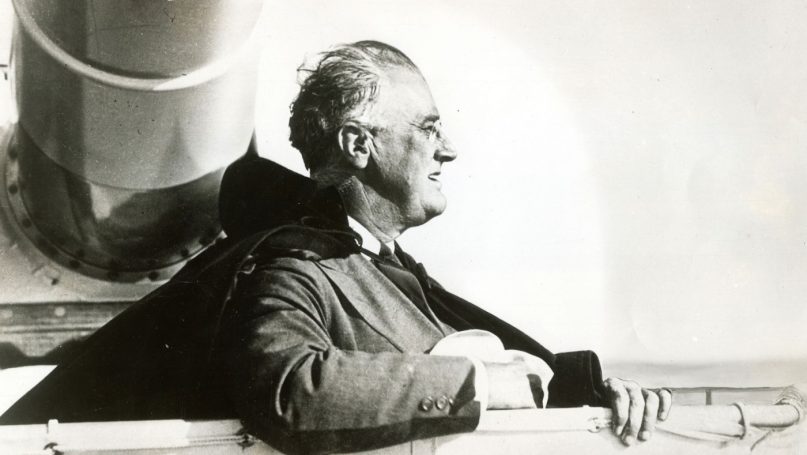
The New Deal: A Global History
By Kiran Klaus Patel
Princeton University Press, 2016
Writing in the midst of the Second World War, the historian and one-time American Historical Association president Carl Becker reflected on the new modes of government that had sprung up across the world over the last decade. No one could doubt, he concluded, that the Age of Laissez Faire had come to an end. In the future, Americans would have to reconcile themselves to a far more regimented economic life. The only remaining question was whether they would preserve or lose their democracy in the process.
It is in the spirit of Becker’s rumination that we ought to approach Kiran Klaus Patel’s ambitious, synthetic, global history of the New Deal. Patel, Professor of European and Global History at Maastricht University, has written previously on civilian mobilization in New Deal America and Nazi Germany. Here he extends his comparative analysis, situating the Roosevelt administration in a world of policy makers engaged in desperate, furious political experimentation. The Great Depression was, as Patel puts it, a “crisis of existing political orders” as much as a crisis of the global market economy (45). The chief political question of the 1930s concerned the forms of government that could best navigate the Depression, and whether democracy would emerge intact on the other side.
Drawing on a wide range of historiographical literatures in multiple languages, Patel advances three overarching arguments about the global engagements of new deal policy making. First, from the beginning, American new dealers displayed a deep interest in foreign state-building and relief experiments. Focusing their attention on Europe, they investigated policy innovation in countries ranging from Sweden to the Soviet Union to Nazi Germany. Borrowing from Republican Senator Arthur Vandenberg, Patel characterizes these engagements as “insulationist,” insofar as the interest in the outside world stemmed primarily from a desire to protect Americans from the global economic instability. Second, Patel argues that the changing international context in the latter half of the 1930s drove the United States to adopt a more overt internationalist stance. As dictatorships abroad showed their belligerent colors, new dealers moved away from their earlier ecumenism and instead forcefully contrasted American policy with authoritarian state-building. Finally, Patel contends that WWII secured the New Deal’s position in American life. The wartime boom not only brought the Depression to an end, it also legitimated and normalized Federal intervention in the economy.
When historians of the United States preach the gospel of transnational history, the result can occasionally feel gimmicky, a means of re-tilling depleted scholarly soil, scolding colleagues for their parochialism, or punching out exceptionalist straw-men. That is thankfully not the case in Patel’s The New Deal. Here, the global perspective has something substantive to offer. As Patel demonstrates, the New Deal is best thought of as a national iteration of a worldwide transformation in modern “governmentality”; a transformation that the trials of the 1930s accelerated, but did not initiate. All over the world, national governments responding to economic instability fought to reinstitute political control over economic life and thereby provide security for their home populations. These efforts involved closing borders, erecting tariffs, and regulating markets, as well as imposing new regimes of social control, bio-politics, and citizen mobilization.
Predictably, the struggle to insulate national states from the storms of globalization proved deeply detrimental to democracy. As Patel notes, the number of democracies worldwide contracted radically during the 1920s and 1930s. Many observers thought that democracy had proven itself too cumbersome to cope with the crisis, and that the historical moment of popular government had ended. Indeed, some Americans encouraged Roosevelt himself to assume dictatorial powers to more effectively deal with the emergency. While the New Deal did inscribe racial exclusions and the subordination of women into US social policy, it nevertheless emerged as a liberal alternative to authoritarian state-building, a repository that other nations drew upon in their own efforts to construct democratic states with mixed economies. It is not always clear from Patel’s account precisely how this process took place—how much was conscious effort, how much luck, how much unintended consequences—but the book does demonstrate that a significant component of the New Deal’s legacy was the widespread acceptance that a third way between a barracks state and laissez faire was possible, and that democracy could successfully muddle its way through crises on the level of the Great Depression.
If The New Deal has a significant problem, it is that, in the effort to document each and every instance of transnational exchange during the years of economic crisis, the book sometimes becomes mired in detail. A whip-around tour of the crisis’s early years, for example, briefly detours into a discussion comparing the Lynds’ 1937 classic sociological study of the inhabitants of Muncie, Indiana, with a similar study conducted by Austrian social scientists in Marienthal. This kind of discussion has value on its own, but the kitchen-sink approach drags on the writing, diverts from the book’s powerful central insight, and occasionally gives The New Deal an encyclopedic rather than an argumentative character.
And it is Patel’s central insight, after all, that comprises the book’s most significant contribution. For a long time, it has been common to assert that the New Deal “saved” American capitalism. That Keynesian perspective has merit, but overlooks the degree to which “the middle way” of mixed economies departed from the established wisdom of nineteenth-century political economy. The New Deal was part of a global movement aimed at subordinating market economies to the demands of national security and stability, broadly conceived. The New Deal, Patel demonstrates, signified the emergence of a new political form in the United States, and it is through the global lens that we can see its novelty most clearly.